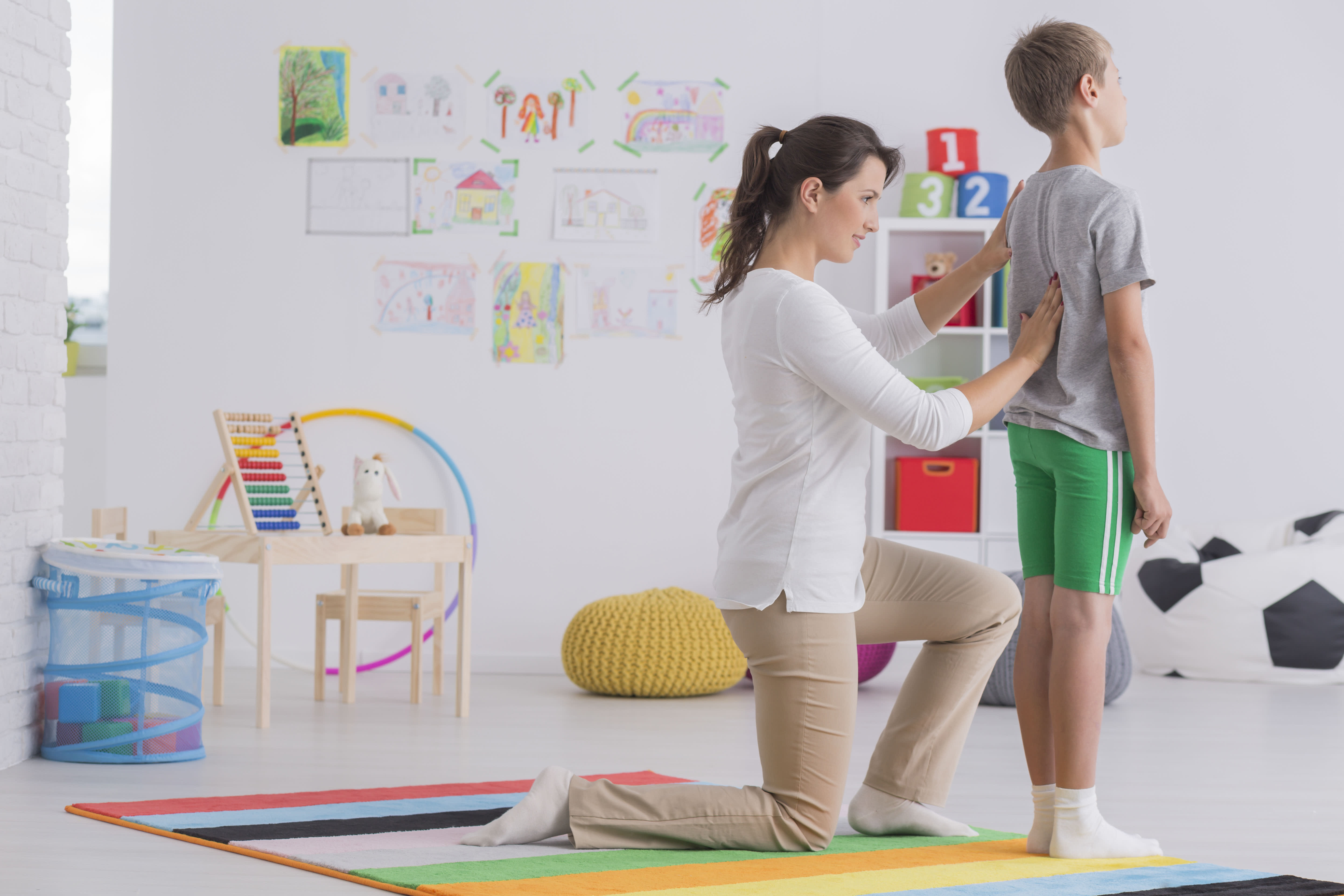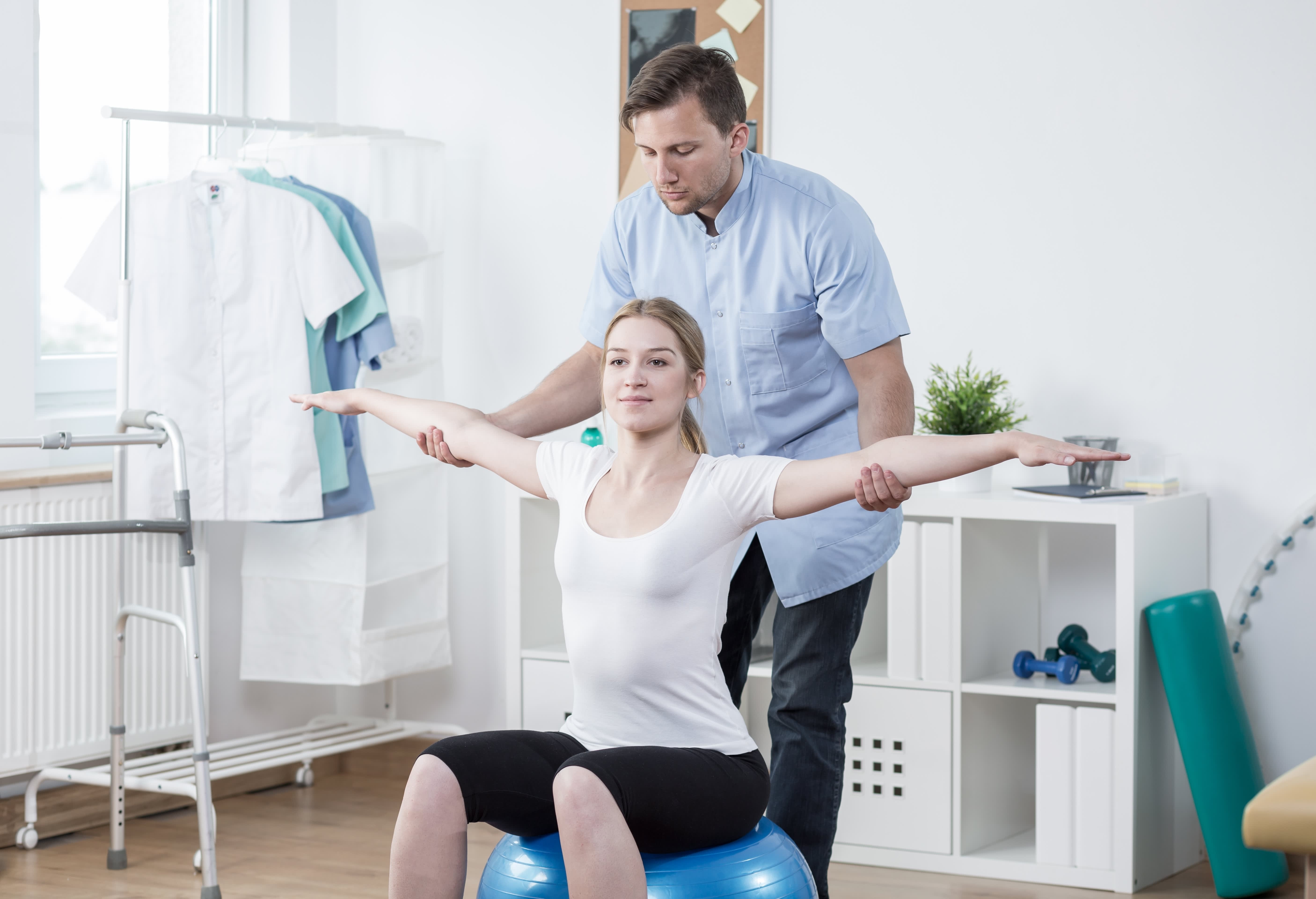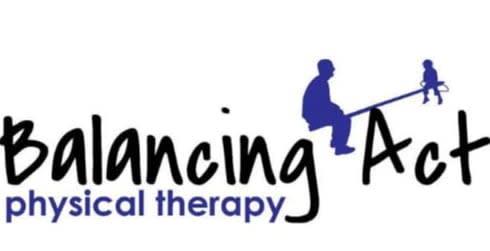How to Fix Bad Posture: Physical Therapy for Posture Correction

Posted on August 8, 2024
Have you ever noticed that slight unease in your back after a long day at work or the way your neck feels stiff when you wake up in the morning? It might just be your body's way of signaling that something's not quite right.
For many, these subtle hints often go ignored until they become full-blown problems. But imagine if you could catch those little signs early and start making changes that could have a lasting impact on your well-being.
By understanding and addressing your posture now, you can set yourself up for a healthier, more comfortable future.
Physical therapy can guide you through targeted exercises and stretches designed to correct these posture imbalances. By incorporating simple yet effective exercises and tips, you can manage muscle tension and support your body's needs.
Let's take a closer look at how you can embark on this journey towards optimal posture and well-being.
What is Correct Posture?
Correct posture, often referred to as a neutral spine, is essential for maintaining overall health and preventing discomfort or injury. Good posture ensures that the body's muscles, joints, and ligaments work efficiently, reducing strain and promoting optimal function.
So, what is correct posture? It involves maintaining the natural curves of the spine: the cervical curve (neck), thoracic curve (mid-back), and lumbar curve (lower back). When these curves are in their natural alignment, the body is balanced, and there is minimal stress on muscles and ligaments. Here are the key points to ensure proper alignment:
- Head: Keep your head level, with the chin parallel to the floor. Avoid pushing your head forward or tilting it downward.
- Shoulders: Roll your shoulders back and down, ensuring they are relaxed and not hunched forward.
- Chest: Keep your chest open and lifted, avoiding a collapsed or rounded upper body.
- Spine: Maintain the natural curves of your spine. Avoid excessive arching or flattening of the lower back.
- Pelvis: Ensure your pelvis is in a neutral position, not tilted too far forward or backward.
- Hips: Keep your hips level and aligned with your knees and ankles.
- Knees: Keep your knees slightly bent and avoid locking them. They should be aligned with your hips and ankles.
- Feet: Distribute your weight evenly on both feet, with your feet pointing forward and shoulder-width apart.
However, many people experience common postural problems due to various factors such as prolonged sitting, poor ergonomics, and lack of awareness. These postural issues can lead to discomfort, pain, and reduced mobility. In the following section, we will explore some of the most common postural problems and provide insights into how they can be addressed.
Common Postural Problems
 Maintaining good posture is essential for overall health and well-being. Poor posture can lead to a variety of health issues, including back pain, neck strain, and reduced mobility.
Maintaining good posture is essential for overall health and well-being. Poor posture can lead to a variety of health issues, including back pain, neck strain, and reduced mobility.
Understanding common postural problems can help you identify and correct these issues, leading to improved posture and a healthier, more comfortable life.
Here, we explore some of the most common postural problems and provide insights into how they can be addressed.
Kyphosis
Poor postural habits can evolve into more serious conditions like kyphosis, which involves excessive forward rounding of the thoracic spine, resulting in a hunchback appearance. This type of posture can lead to muscle stiffness, back pain, and potentially even respiratory difficulties since the position compresses the chest cavity.
Lordosis
On the other hand, lordosis is characterized by an exaggerated inward curve of the lumbar spine. When viewed from the side, it resembles a swayback posture, where the buttocks appear more prominent, and the curve of the lower spine is pronounced. This alignment causes uneven pressure distribution on the spine, leading to discomfort, lower back pain, and potentially more severe issues such as nerve impingement if left uncorrected.
To maintain healthy posture and prevent the development of lordosis, it’s crucial to strengthen the abdominal and gluteal muscles while ensuring the flexibility of the hip flexors and hamstrings. Simple exercises like pelvic tilts, bridges, and hamstring stretches can be beneficial for postural correction.
Forward Head Posture
Forward head posture, often referred to as "text neck," occurs when the head protrudes forward from the body's midline. This posture is commonly seen in individuals who spend a lot of time looking down at phones, computers, or other devices. Over time, this can lead to neck pain, headaches, and upper back discomfort. To correct forward head posture, it’s important to practice exercises that strengthen the neck and upper back muscles, as well as incorporate regular breaks and ergonomic adjustments to your workspace.
Rounded Shoulders
Rounded shoulders are characterized by the forward rounding of the shoulders, often caused by prolonged periods of sitting and poor ergonomics. This posture can lead to shoulder pain, upper back tightness, and decreased range of motion.
To address rounded shoulders, focus on exercises that strengthen the upper back and stretch the chest muscles. Additionally, being mindful of your posture throughout the day and ensuring that your work environment promotes proper alignment can help prevent this common issue.
Anterior Pelvic Tilt
Anterior pelvic tilt is a postural problem where the pelvis tilts forward, causing an exaggerated curve in the lower back. This condition is often a result of prolonged sitting, weak core muscles, and tight hip flexors. Individuals with anterior pelvic tilt may experience lower back pain and discomfort. Correcting this posture involves strengthening the core and glute muscles, stretching the hip flexors, and practicing proper posture during daily activities. Incorporating these exercises into your routine can help realign the pelvis and reduce strain on the lower back.
Swayback Posture
Swayback posture occurs when the hips push forward and the upper body leans back, creating an exaggerated curve in the lower back and a flattened upper back. This posture can lead to lower back pain, hip discomfort, and overall body imbalances. To correct swayback posture, focus on strengthening the core and hip muscles, while also working on improving overall body alignment. Regularly practicing exercises at home that promote a neutral spine and proper hip alignment can help alleviate the symptoms associated with swayback posture.
Flat Back Posture
Flat back posture is characterized by a lack of natural curves in the spine, particularly in the lower back. This posture can make it difficult to stand for long periods and may lead to back pain and stiffness. Flat back posture is often caused by muscle imbalances and a sedentary lifestyle. To address this issue, it's important to engage in exercises that strengthen the back and core muscles, as well as incorporate stretches that promote spinal mobility. Improving overall posture and maintaining an active lifestyle can help prevent and correct flat back posture.
Physical Therapy for Posture Improvement
The good news is that, with exercise and some expert guidance, you can improve your posture. The solution is very real and it's called physical therapy for posture improvement. Here's how it works:

1. In-Depth Posture Assessment
Through physical therapy for posture improvement, you undergo a comprehensive process that begins with an in-depth initial assessment. The assessment evaluates your posture, muscle imbalances, joint alignment, and overall biomechanics. By examining your posture from different angles and performing various movements, your physical therapist identifies the specific type of postural deviation you have—whether it's the forward head, round shoulders, anterior pelvic tilt, or another issue.
2. Personalized Treatment Plan
With this detailed understanding, your therapist can create a personalized treatment plan tailored to your unique needs. This individualized approach ensures that every exercise, stretch, and intervention directly addresses your specific concerns and goals.
3. Posture Correction Guidance
Your physical therapist plays a crucial role in guiding you through the process of postural correction:
- They offer expert instruction on how to perform exercises correctly to avoid injury and maximize benefits.
- Additionally, your therapist provides hands-on assistance, stretching tight muscles, and mobilizing stiff joints, which are essential for improving posture.
- They can also educate you on ergonomic principles, helping you make adjustments in your daily environment—like your workstation setup, sitting posture, and sleeping positions. This holistic approach ensures that you adopt healthy postural habits not just during therapy sessions but throughout your daily life.
4. Consistent Treatment
Effective physical therapy exercises for posture correction vary depending on the specific postural issues:
- For instance, if you have rounded shoulders, exercises like scapular retractions, chest stretches, and thoracic spine extensions can be beneficial.
- If your issue is an anterior pelvic tilt, strengthening the glutes, engaging the core, and stretching the hip flexors are essential. Pelvic tilts, bridges, and plank variations are excellent choices.
- For forward head posture, cervical retractions and chin tucks help realign the neck.
Integrating these exercises into your routine helps gradually correct muscle imbalances and improve spinal alignment. While exercises are vital, remember that consistency and correct form are key to effective postural correction. Nutritional support, hydration, and even proper sleep can contribute positively to your postural health. When you commit to your physical therapy plan and utilize the tools and guidance provided, you pave the way for sustained postural improvements and overall well-being.
Tips and Techniques for Maintaining Good Posture
Incorporating ergonomic adjustments into your daily life is crucial for maintaining good posture:
Adjust Your Workstation
Start by ensuring that your workstation is set up to support spinal alignment:
- Your chair should allow your feet to rest flat on the floor or on a footrest, and your knees should be at or below hip level.
- Make sure your computer monitor is at eye level to avoid straining your neck.
- If you're using a laptop, consider a laptop stand and an external keyboard to help improve posture.
- Position your keyboard and mouse so that your shoulders are relaxed, your elbows are close to your body, and your wrists are straight.
- Also, take advantage of ergonomic accessories like lumbar rolls and seat cushions to support the natural curves of your spine.
Adopt Proper Sitting and Standing Habits
Proper sitting and standing habits are equally essential in the journey to correct posture. When sitting:
- Avoid crossing your legs and try to distribute your weight evenly on both hips.
- Keep your back against the chair for support and sit up straight instead of slumping forward.
- Regularly adjust your sitting position and take breaks to change posture to prevent stiffness and discomfort.
When standing:
- Distribute your weight evenly on both feet and avoid locking your knees.
- Practice standing tall with your shoulders relaxed and your ears aligned with your shoulders.
- If necessary, use a footstool to periodically rest one foot to reduce lower back strain.
Take Regular Breaks and Move
Regular breaks and movement play a vital role in maintaining postural health. Prolonged periods of sitting or standing can lead to muscle imbalances and poor posture:
- Schedule breaks every 30 to 60 minutes to stand, stretch, or take a brief walk.
- Simple stretches can help alleviate tension and improve circulation. For example, shoulder shrugs and chest stretches can relieve tightness in the upper body, while hamstring and hip flexor stretches can ease tension in the lower body.
- Engaging in activities like walking, swimming, or yoga not only promotes overall fitness but also enhances your postural muscles' strength and flexibility.
Seek Professional Help When Necessary
Identifying the right time to seek professional help is one of the most crucial steps in addressing posture-related issues effectively. So, when exactly should you consider consulting a physical therapist?
- If you’re experiencing persistent pain in your back, neck, or shoulders that doesn’t improve with regular self-care measures, it’s a clear sign that professional intervention might be necessary.
- Another important indicator is a noticeable change in your posture that others point out or you observe in the mirror over time—such as increased rounding of the shoulders, a forward head posture, or an exaggerated curve in the lower back.
- Further, if you begin to experience numbness or tingling in your extremities, it’s a signal that your posture may be affecting your nerves, and immediate attention is warranted. Professional evaluation can determine the underlying causes of these symptoms and help reduce pain through targeted interventions.
Related: What is EMS? Exploring the Science Behind Electrical Muscle Stimulation
Wrapping Up
At those times when home exercises and ergonomic adjustments don’t give you the relief you seek, professional help becomes invaluable. One significant benefit of consulting a physical therapist is the personalized treatment plan tailored to your specific needs. This plan not only includes exercises to strengthen weak muscles but also incorporates stretches for tight muscles and adjustments to your daily habits and routines that may be contributing to poor posture.
Our team at Balancing Act Physical Therapy, PLLC, located right here in Kennewick, Washington, is dedicated to helping you achieve optimal posture and overall well-being. We understand that navigating through postural issues can be challenging, and that's why our services include more than just physical therapy; we also offer hippotherapy, a unique approach integrating therapeutic horseback riding to enhance movement and balance. If you're battling with muscle stiffness, persistent pain, or discomfort from poor posture, our expert therapists can guide you through a customized treatment plan tailored to your specific needs. You can start your journey towards better posture by scheduling a comprehensive assessment with us. Taking that first step is crucial, and having professional support makes all the difference.
If you're ready to make a change, why not reach out to us today? Contact Us Now!
Give us a call at (509) 378-6155 or email Terry directly at [email protected] for any inquiries or to discuss how our services can benefit you. Don’t wait until discomfort affects your quality of life. Let our experienced therapists guide you towards better posture and greater well-being. Together, we can address the root of your postural issues and set you on a path to a healthier, more balanced life.
Get in Touch
Get in Touch with the Experts at Balancing Act Physical Therapy
Don't let pain and discomfort hold you back from living your life to the fullest. Contact our team of experienced physical therapists today and take the first step towards a healthier, happier you.

